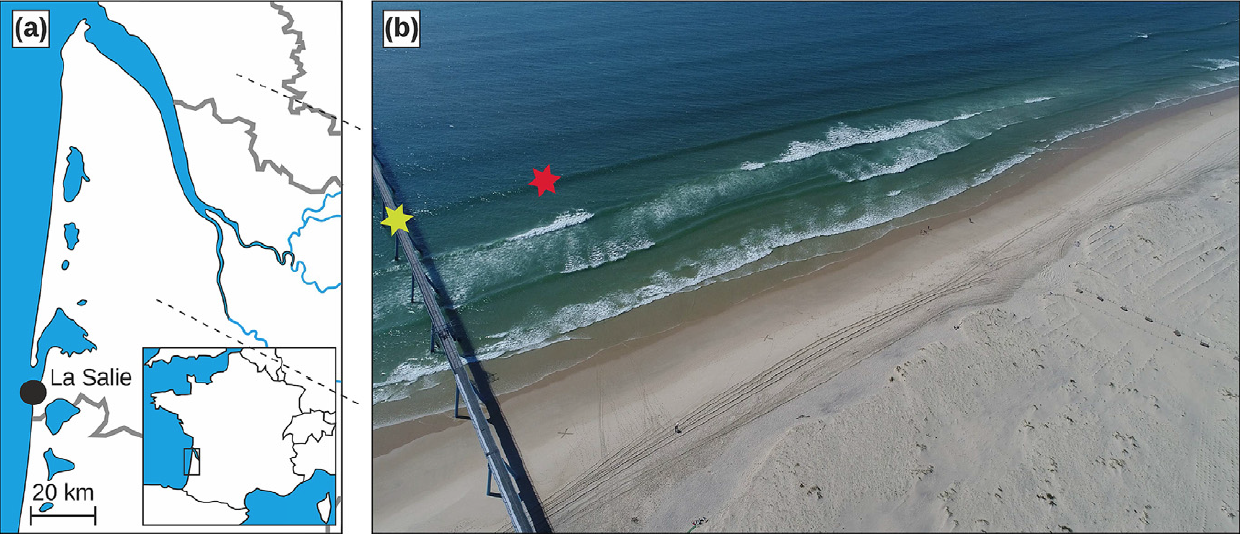A. Mouragues, P. Bonneton, D. Lannes, B. Castelle, and V. Marieu, Coastal Engineering, 150:147 – 159, 2019 Download
We compare different methods to reconstruct the surface elevation of irregular waves propagating outside the surf zone from pressure measurements at the bottom. The traditional transfer function method (TFM), based on the linear wave theory, predicts reasonably well the significant wave height but cannot describe the highest frequencies of the wave spectrum. This is why the TFM cannot reproduce the skewed shape of nonlinear waves and strongly underestimates their crest elevation. The surface elevation reconstructed from the TFM is very sensitive to the value of the cutoff frequency. At the individual wave scale, high-frequency tail correction strategies associated with this method do not significantly improve the prediction of the highest waves. Unlike the TFM, the recently developed weakly-dispersive nonlinear reconstruction method correctly reproduces the wave energy over a large number of harmonics leading to an accurate estimation of the peaked and skewed shape of the highest waves. This method is able to recover the most nonlinear waves within wave groups which some can be characterized as extreme waves. It is anticipated that using relevant reconstruction method will improve the description of individual wave transformation close to breaking.



Laisser un commentaire